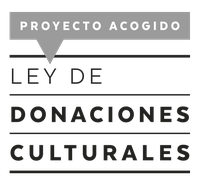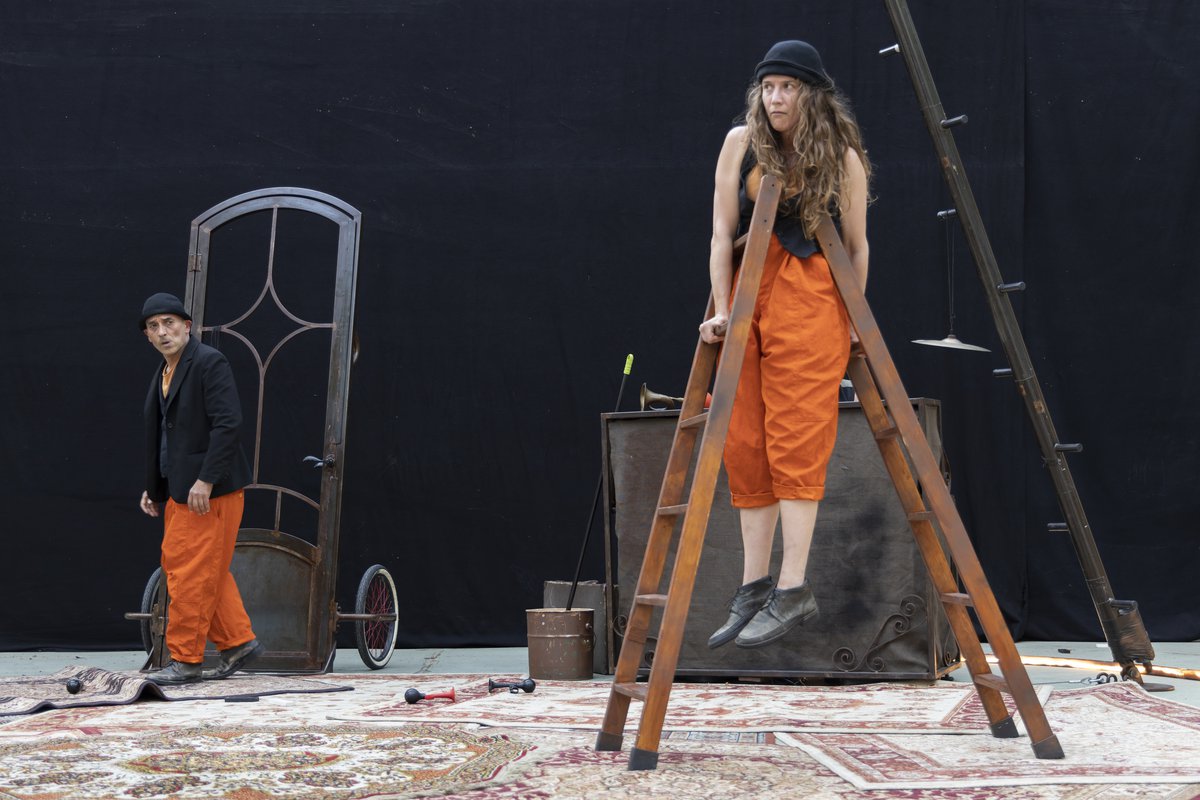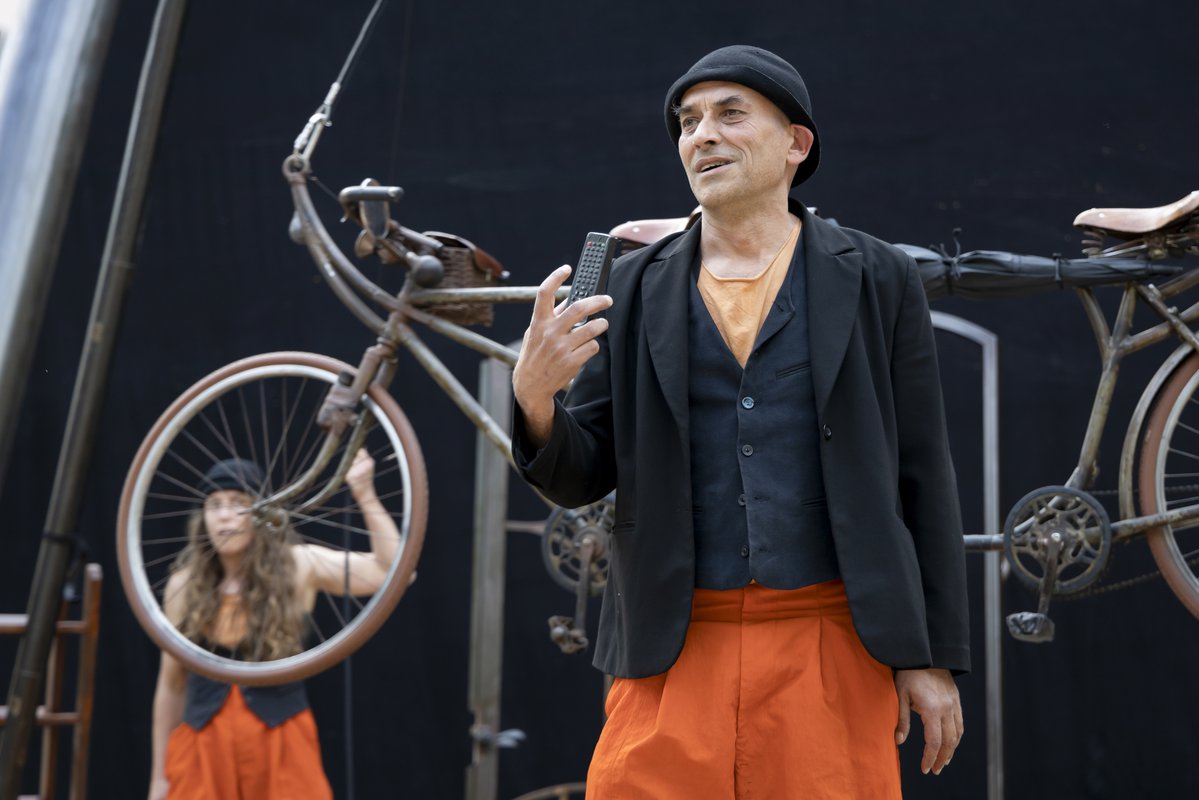Circo
“Without saying a word, the leading duo goes from smiling to laughing, using a humor that is sometimes existential, as well as ingenuity and emotion. It’s deep but at the same time suitable for all ages”.
–Recomana, a Barcelona critics’ website

Staged and created by: Leandre Ribera | Clowns: Leandre Ribera and Laura Miralbés | Music: Marco Rubiol | Composer: Víctor Morato | Produced and distributed by: Leandre SL - Agnés Forn.
Leandre Ribera
The creator
One of the greats of street theater
Leandre Ribera has spent more than 25 years touring the world with his poetic kind of humor, inspired by silent movies, mime, gestures and the absurd. He discovered street theater in 1993 on a trip to Australia and had his first solo street theater success with Streecease when he returned home in 1996. In 1999, he founded the Leandre & Claire Co. with artist Claire Ducreux, whose productions Fragile and Madame et Monsieur have toured the world. He has been creating and producing a series of shows with his own company, Leandre Clown, since 2003, making him one of street theater’s greats. He is also considered one of the best contemporary clowns in the world.
-It is a well-known international show that, before coming here, toured several countries in Europe. It carries all the hallmarks of the Leandre Clown Co., one of Europe’s circus act and clown greats that has won multiple awards for productions such as Rien à dire, Chez Leandre, Démodés and Rodó. The company has performed at some of the most important performing arts festivals in the world, such as the Festival d’Avignon and the Circ al Carrer Festival.
-It can be interpreted in several different ways , making it apt for different kinds of audience. Children enjoy the clowns’ skill and mistakes, while adults find themselves questioning its nostalgic and existential message - humans’ struggle to attain the unattainable. As Catalan critic Jordi Bordes says, “like Godot, the journey of this pair of clowns doesn’t seem to have an end. The poetry’s in the journey, in persevering in believing in an idea”.
—Clown: In the words of Argentine actor, director, clown and teacher Marcelo Katz, “clowns make us laugh with their take on the world and attempts to rise above their failures. The clown technique is profound, crazy and unexpected”, he confirms. What makes them different from buffoons is “a big technical difference. The buffoon uses universal archetypes of ridicule (such as tripping), whereas clowns work with and draw on their own fears, dreams and obsessions”.
—Physical theater: This is a kind of theater based on the body’s expressive and communicational abilities, in performances whose aim is to tell a story using corporality. Its roots are in Japanese nō theater, Italian commedia dell’arte, circus acts, certain types of Asian theater and mime. Its modern-day version is usually said to date from the first half of the twentieth century.
—New circus: Also called contemporary circus (nouveau cirque in French), this performing arts genre - developed in the middle of the twentieth century - is characterized, among other things, by basing itself on a story told through different circus acts and disciplines. The focus is on making an esthetic impact and on a performance that tells a story, sometimes using theater techniques as well.
–Find out more about the work of the Leandre Clown Co. on its YouTube channel.



Fly me to the moon
By Leandre Clown Co. | Directed by Leandre Ribera
- Spain
- 40 minutes
- Todo público
A pair of clowns, a tandem bicycle and the (un)attainable dream of going to the moon take to the streets of different parts of Chile.
A clown appears in our fast-moving world to offer us a break, a moment of sunshine. Fly me to the moon is a gift for the senses, aiming to remind us of the simple things in life, like laughing, listening, surprising ourselves and playing. The character played by Catalan clown Leandre Ribera takes on the role of leading the audience to the sun and moon and back, in spite of the cynicism and whirlwind of everyday life, to the place we knew all too well when we were children. Fly me to the moon is two clowns’ journey to the moon. It is a dreamer’s greatest achievement and the greatest achievement of two innocents.
Tandem bicycle: a bicycle for two people.
Journey: everything that happens between here and there.
The moon: where we all want to go to daydream.
A pair of clowns: walking the line between disaster and something poetic.
A flying bicycle, wood, iron, dust, clown shoes and hats pulled down over their ears. The moon is waiting for us.
“Without saying a word, the leading duo goes from smiling to laughing, using a humor that is sometimes existential, as well as ingenuity and emotion. It’s deep but at the same time suitable for all ages”.
–Recomana, a Barcelona critics’ website

Staged and created by: Leandre Ribera | Clowns: Leandre Ribera and Laura Miralbés | Music: Marco Rubiol | Composer: Víctor Morato | Produced and distributed by: Leandre SL - Agnés Forn.
Leandre Ribera
The creator
One of the greats of street theater
Leandre Ribera has spent more than 25 years touring the world with his poetic kind of humor, inspired by silent movies, mime, gestures and the absurd. He discovered street theater in 1993 on a trip to Australia and had his first solo street theater success with Streecease when he returned home in 1996. In 1999, he founded the Leandre & Claire Co. with artist Claire Ducreux, whose productions Fragile and Madame et Monsieur have toured the world. He has been creating and producing a series of shows with his own company, Leandre Clown, since 2003, making him one of street theater’s greats. He is also considered one of the best contemporary clowns in the world.
»Sin pronunciar ni una palabra, el dúo protagonista transita, haciendo uso de un humor a veces existencial, de la sonrisa a la risa a través del ingenio y la emoción. Profunda y al mismo tiempo apta para todos los públicos«.
-Porque es un espectáculo reconocido a nivel internacional, que antes de llegar aquí ha recorrido diversos países de Europa. Un trabajo que lleva el sello de la compañía Leandre Clown, referente del circo y clown en ese continente, multipremiada por puestas en escena como Rien à dire, Chez Leandre, Démodés y Rodó, y presente en los festivales de artes escénicas más importantes del mundo, como Avignon o Fira de Circ al Carrer.
-Porque su puesta en escena tiene múltiples lecturas que le permiten llegar a distintos públicos. Mientras que niños y niñas gozan con las destrezas y desaguisados de los payasos, los adultos se ven interpelados por el toque nostálgico y existencialista de su mensaje: la lucha del ser humano por alcanzar lo inalcanzable. Como dice el crítico catalán Jordi Bordes: “El viaje de esta pareja de clowns parece que, como Godot, no tenga un final, La poesía está en el viaje. En la perseverancia por creer en una idea”.
—Clown: El arte del clown es una práctica antigua y universal. En palabras del actor, director, clown y profesor argentino Marcelo Katz, "el clown hace reír con su mirada sobre el mundo y sus intentos de posarse por encima de sus fracasos. La técnica del clown es profunda, alocada e inesperada", afirma. En cuanto a lo que lo distingue del payaso, explica: "la gran diferencia técnica es que el payaso trabaja sobre arquetipos del ridículo universal (por ejemplo, el tropezón), mientras que el clown trabaja y compone a partir de sus propios temores, sueños y obsesiones".
—Teatro físico: Se define así a un tipo de teatro centrado en las capacidades expresivas y comunicativas del cuerpo, a través de actuaciones en la que se busca contar una historia principalmente a través de movimientos corporales y los gestos. Tiene antecedentes en el teatro nō japonés, en la comedia del arte italiana, en las artes circenses, en ciertas vertientes del teatro asiático y en la tradición de los mimos, y su vertiente moderna se suele situar en la primera mitad del siglo XX.
—Nuevo circo: También llamado Circo contemporáneo o Nouveau cirque, es un género de las artes escénicas desarrollado a partir de la segunda mitad del siglo XX y que se caracteriza, entre otras cosas, por poner al centro de la creación una historia, la que se narra a través de distintas habilidades y disciplinas circenses. El foco está puesto en crear un impacto estético y una puesta en escena que permita narrar un relato, a veces usando técnicas del teatro.
–Revisa más sobre el trabajo de la compañía Leandre Clown en su canal de YouTube.
COLABORA



